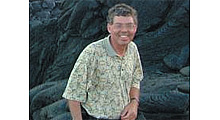
Doug Lung
The FCC this week released a report reassessing its RF exposure limits and policies as well as proposing changes to the commission's rules regarding human exposure to RF electromagnetic fields.
While many of the new rules and proposed changes affect RF emitters less than 20 cm away from a person, there are a number of items in the massive 201-page First Report and Order, Further Notice of Proposed Rule Making and Notice of Inquiry that will impact broadcasters. The FCC says it is in the process of revising FCC Office of Engineering and Technology Bulletin 65 (OET-65) which provides procedures for calculating RF exposure under different conditions. The key change in the Order is making specific absorption rate (SAR) the primary metric for compliance. The power density (Maximum Permissible Exposure (MPE)) limits broadcast and satellite uplink engineers are familiar with have their basis in SAR, so the results should be similar.
The new FCC Section 1.1310 “Radiofrequency radiation exposure limits” states, “Specific absorption rate (SAR) shall be used to evaluate the environmental impact of human exposure to radiofrequency (RF) radiation as specified in § 1.1307(b) within the frequency range of 100 kHz to 6 GHz (inclusive).”
Section 1.1310(c) now reads, “The SAR limits for general population/uncontrolled exposure are 0.08 W/kg, as averaged over the whole body, and a peak spatial-average SAR of 1.6 W/kg, averaged over any 1 gram of tissue (defined as a tissue volume in the shape of a cube). Exceptions are the parts of the human body treated as extremities, such as hands, wrists, feet, ankles, and pinnae, where the peak spatial-average SAR limit is 4 W/kg, averaged over any 10 grams of tissue (defined as a tissue volume in the shape of a cube). Exposure may be averaged over a time period not to exceed 30 minutes to determine compliance with general population/uncontrolled SAR limits.”
Fortunately most broadcasters and satellite operators will not have to worry about SAR calculations. Section 1.1310(d)(2) says, “For operation within the frequency range of 300 kHz and 6 GHz (inclusive), the limits for maximum permissible exposure (MPE), derived from whole-body SAR limits and listed in Table 1 of paragraph (e) of this section, may be used instead of whole-body SAR limits as set forth in paragraph (a) through (c) of this section to evaluate the environmental impact of human exposure to RF radiation as specified in § 1.1307(b), except for portable devices as defined in § 2.1093 as these evaluations shall be performed according to the SAR provisions in § 2.1093 of this chapter.”
MPE limits in the 30-300 MHz and 300-1500 MHz for Occupational/Controlled and General Population/Uncontrolled Exposure in Section 1.1310(e) Table 1 remain unchanged.
The FCC declined to change its rules making every contributor of 5 percent or more of the MPE for uncontrolled environments equally responsible in cases where multiple transmitters combined contribute more 100 percent of the uncontrolled environment MPE.
The Further Notice of Proposed Rule Making contains several changes that could impact broadcasters. ERP is now clearly defined as “the product of the net power delivered to the antenna (i.e., excluding reflected and/or dissipated power not transferred to the antenna) and its maximum gain, where the “maximum gain” is the largest far-field total power gain relative to a dipole in any direction for all transverse polarization components.”
Another proposed change is a table setting threshold ERP at a given separation distance. Any ERP below the limit at the separation distance from the public will not require a routine RF exposure environmental evaluation provided the distance is more than one half the free-space operating wavelength. No evaluation is required if the available maximum time-averaged power is less than one milliwatt. This could benefit LPTV and translator stations. For 300-1500 MHz, evaluation is required if ERP ≥ 0.0128 R2f, where R is the distance in meters and f is the frequency in MHz. ERP is in watts. For example, for a TV station on channel 36 with an antenna 100m (328 feet) away from the public, the limit below which evaluation is not needed would be 77,440 watts.
The proposed rules also clarify regulations regarding transient exposure in controlled environments near fixed RF sources and where warnings and training are required. Five signs are specified for defining RF exposure in the following areas:
•Below the General Population Limit, “Information” signs are optional;
•Between the General Population Limit and the Occupational Limit “Notice” signs are required;
•Between Occupational Limit and 10x the Occupational limit, a “Caution” sign is used;
•Above 10x the Occupational limit, a “Warning” sign would have to be used; and
•A “Danger” sign is required where “immediate and serious injury would occur on contact regardless of category,”
I'll have more RF power density calculation and maximum permissible exposure limit compliance in a future RF Technology column.
The professional video industry's #1 source for news, trends and product and tech information. Sign up below.

Doug Lung is one of America's foremost authorities on broadcast RF technology. As vice president of Broadcast Technology for NBCUniversal Local, H. Douglas Lung leads NBC and Telemundo-owned stations’ RF and transmission affairs, including microwave, radars, satellite uplinks, and FCC technical filings. Beginning his career in 1976 at KSCI in Los Angeles, Lung has nearly 50 years of experience in broadcast television engineering. Beginning in 1985, he led the engineering department for what was to become the Telemundo network and station group, assisting in the design, construction and installation of the company’s broadcast and cable facilities. Other projects include work on the launch of Hawaii’s first UHF TV station, the rollout and testing of the ATSC mobile-handheld standard, and software development related to the incentive auction TV spectrum repack. A longtime columnist for TV Technology, Doug is also a regular contributor to IEEE Broadcast Technology. He is the recipient of the 2023 NAB Television Engineering Award. He also received a Tech Leadership Award from TV Tech publisher Future plc in 2021 and is a member of the IEEE Broadcast Technology Society and the Society of Broadcast Engineers.
